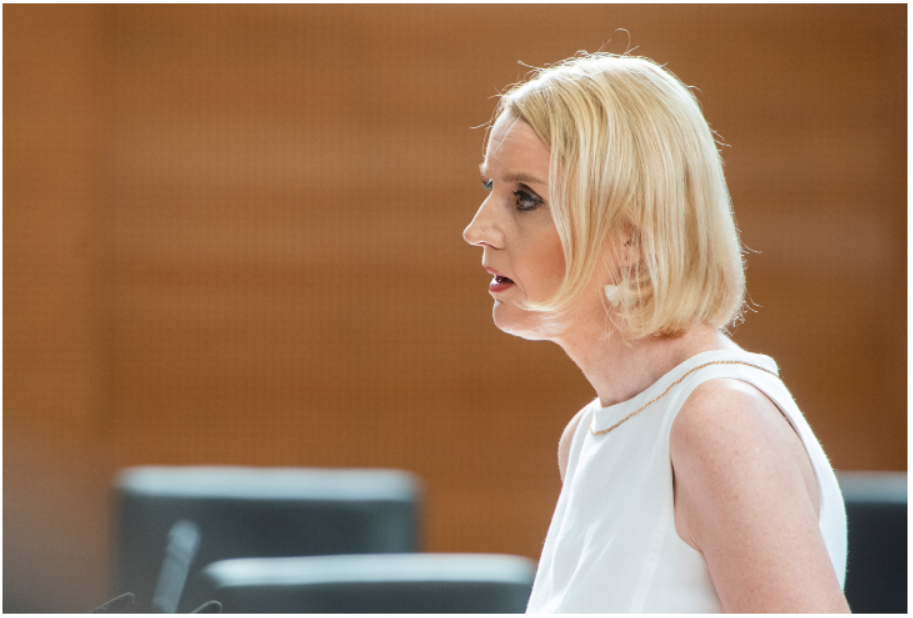By: Peter Jančič (Spletni časopis)
The support for Svoboda under Robert Golob has improved compared to the previous measurement, but still, more voters would vote for SDS under Janez Janša than for all three government parties combined.
This was shown by a survey published yesterday in Dnevnik by Ninamedia, which polls people on how much they support the five parties in parliament. SDS is far ahead of Svoboda, NSI under Matej Tonin is ahead of Levica under Asta Vrečko, and SD under Tanja Fajon, which is currently at the bottom, the measurement showed. If the elections were to turn out like this, Janša would most likely form the government.

For Dnevnik and Ninamedia, it is a bit awkward because Revija Reporter published yesterday that the owner and director of Ninamedia, Nikola Damjanić, is not entirely disconnected from the events in Svoboda. He is the director of the company Ljubljanski val, whose owner is former journalist and politician Mile Šetinc, who is the husband of Mojca Pašek Šetinc. In October last year, she was expelled from the party due to Robert Golob’s assessment that she was playing for the wrong team. At the end of November, Pašek Šetinc left Svoboda. Pašek Šetinc has been connected to Damjanić since her time as an editor at TVS, which I revealed five years ago when I reported on Damjanić’s unusual dealings at RTVS, to which she contributed. That Damjanić is the director of Mile Šetinc’s company, Erar, is shown by:

The spouses Pašek and Šetinc, according to Reporter’s assessment, invested half a million euros from the company Ljubljanski val, owned by Mile Šetinc and directed by Nikola Damjanić, into a new family house on the outskirts of Ljubljana.

Whether this connection influences the measurements of Damjanić’s Ninamedia, which has long been known to be closely connected to the Mayor of Ljubljana, Zoran Janković, and his network, is difficult to assess. Damjanić is known for pushing boundaries. He withdrew from Ninamedia in the past as director and owner after his agency secured the contract for public opinion polls for the national broadcaster RTVS. The deal was made while he was a member of the RTVS programme council, proposed by Janković’s Positive Slovenia (PS) party and director and owner of Ninamedia, which was prohibited by law. When he was no longer a council member, he returned to Ninamedia.

When I revealed Damjanić’s unusual business dealings with RTVS in 2019 in the online newspaper, the then-director Igor Kadunc suspended the business. It began in 2015 during the tenure of the previous general director, Marko Filli. However, it was supposed to be a decision about a small-value deal within the authority of the television director at that time. This was Ljerka Bizilj, and the editorial office of the news programme, led by Jadranka Rebernik. Damjanić was known to be opposed to Filli in the RTV programme council. He was among those who tried to ensure that Nataša Pirc Musar would take overpower at RTV Slovenija. Instead of the position of general director, she eventually received a €70,000 settlement with Kadunc. According to unofficial information, as I reported five years ago, the idea of collaborating with Damjanić came from Mojca Pašek Šetinc. The deal was won by publishing a public tender on TVS, and Damjanić’s company, which had previously lost deals with POPTV, offered the lowest price. They somehow overlooked the fact that they should not be doing business with the company of their own council member.
WHEN PIRATES, SNS, RESNI.CA DISAPPEAR…
For POP TV surveys in recent years, Mediana has been conducting them, offering respondents the choice of all parties that received at least one percent of the votes in the last elections. The shares of the five parties in parliament, because Ninamedia measures only those, are significantly higher in the measurement for Dnevnik as a result. According to Mediana, the last survey was conducted a week ago, and three small parties that Ninamedia does not measure could even enter the National Assembly: Pirati, SNS, and Resni.ca.

In the graphics and article, the party support percentages are calculated considering only parties defined by voters. This allows for comparison with elections and between surveys. I count the “other” party choice among those defined for parties. These are the parties that are not offered to respondents (for example, the five parliamentary parties), but they remember them themselves. The original party support percentages from various surveys, as published by the media, which are the basis for calculations, are published in the table (you can enlarge the table by clicking on it):

I provide all the data that served as the basis for the calculations because it facilitates understanding the differences between measurements, and allows verification to see if there may have been errors in the transmission and processing of data.

